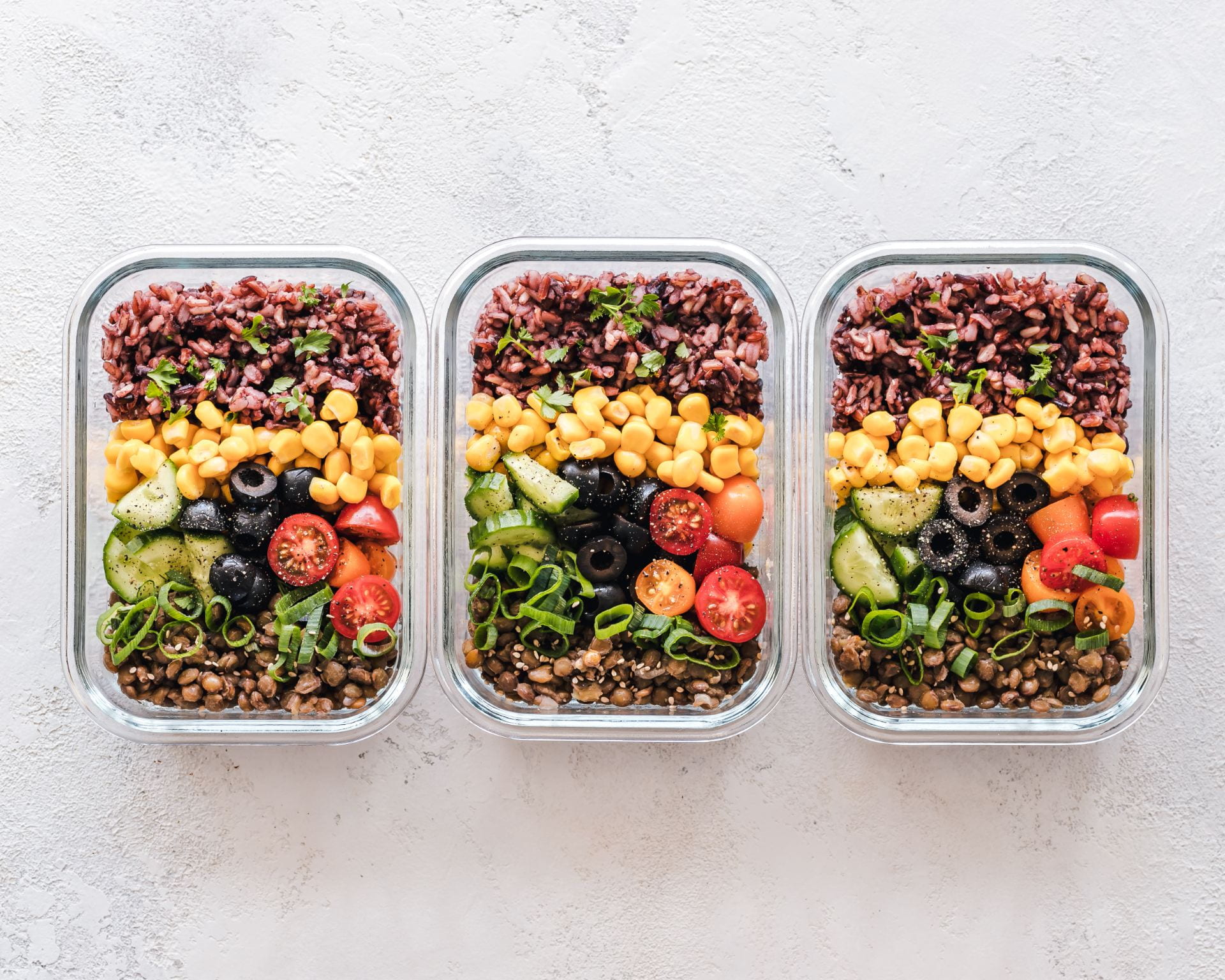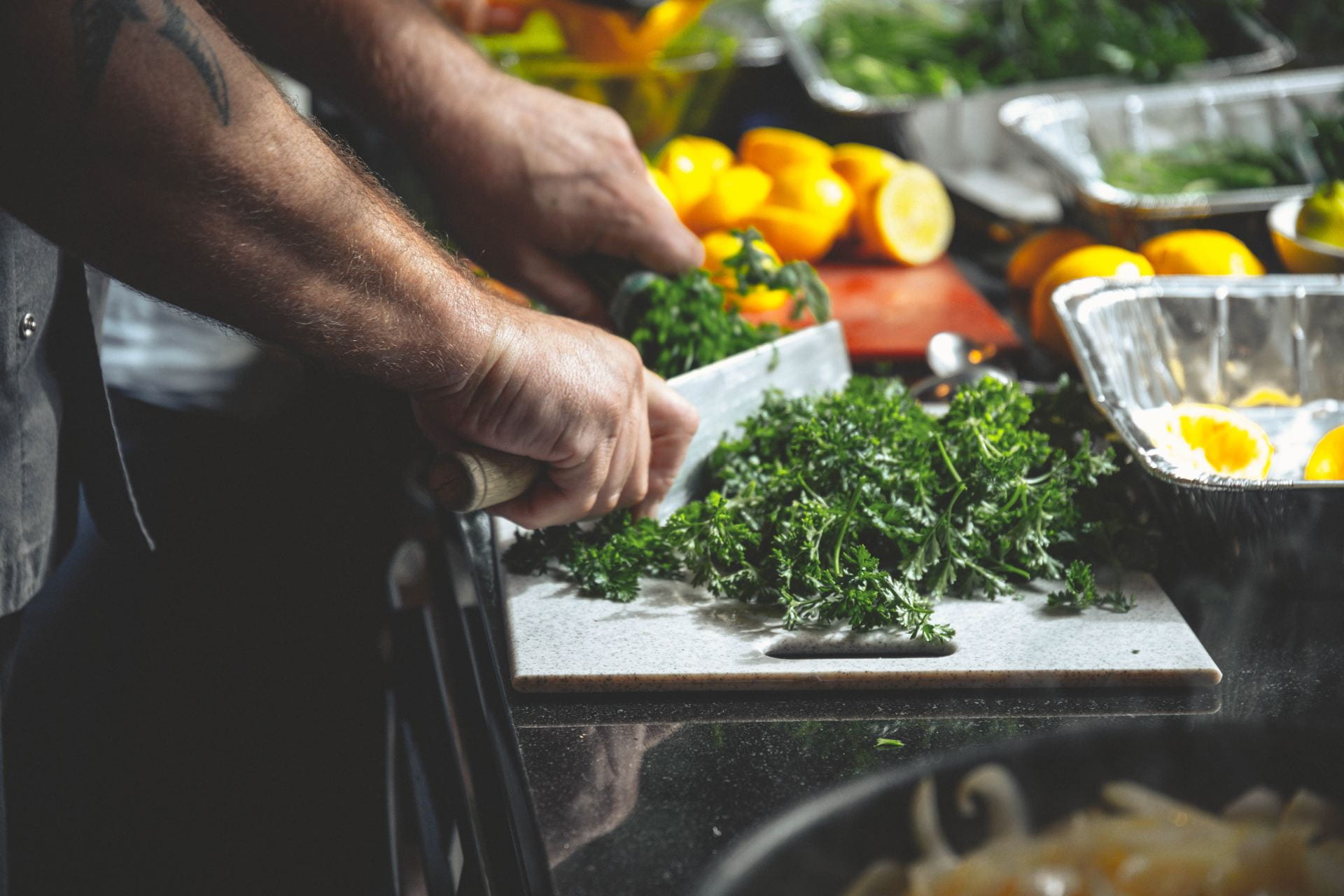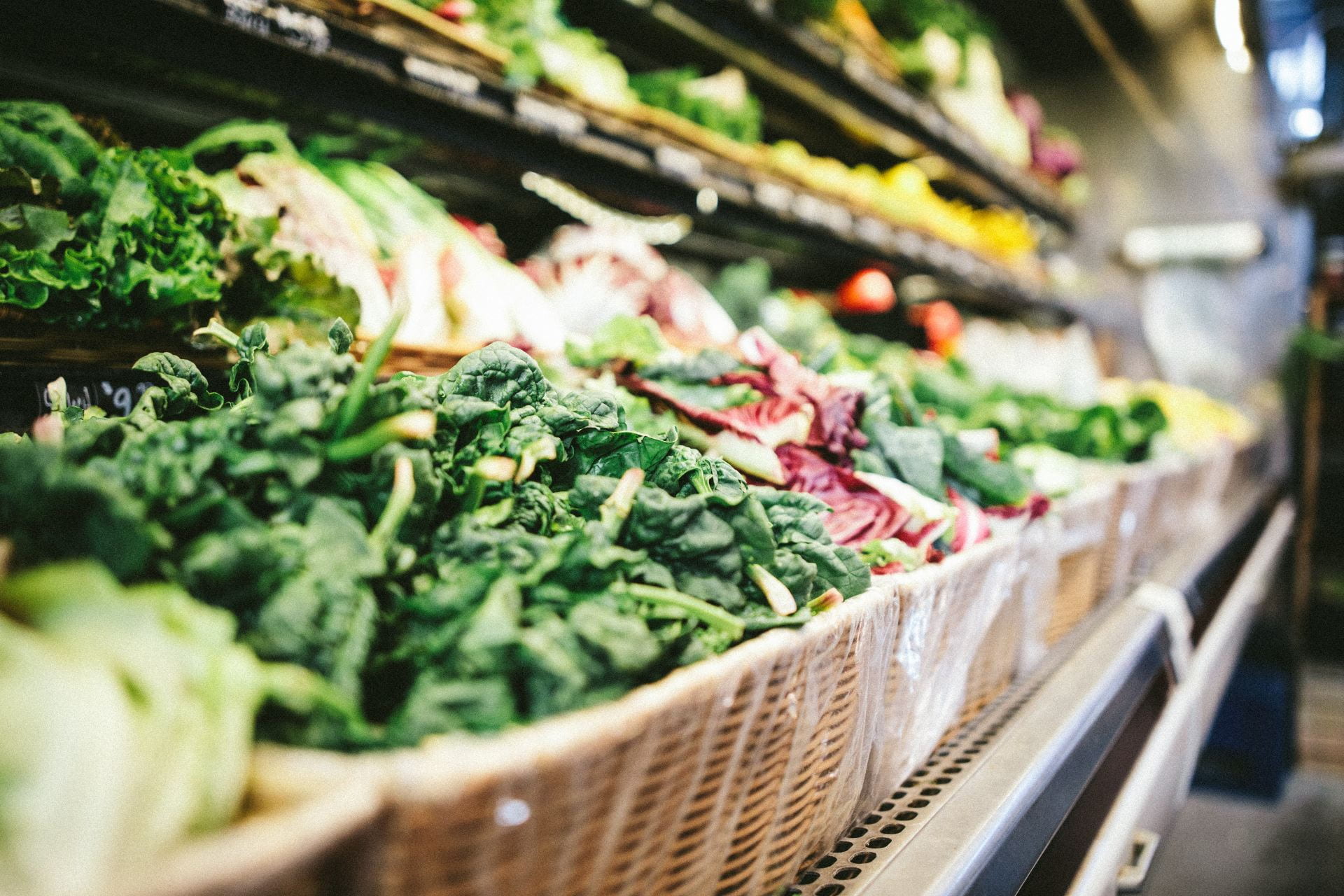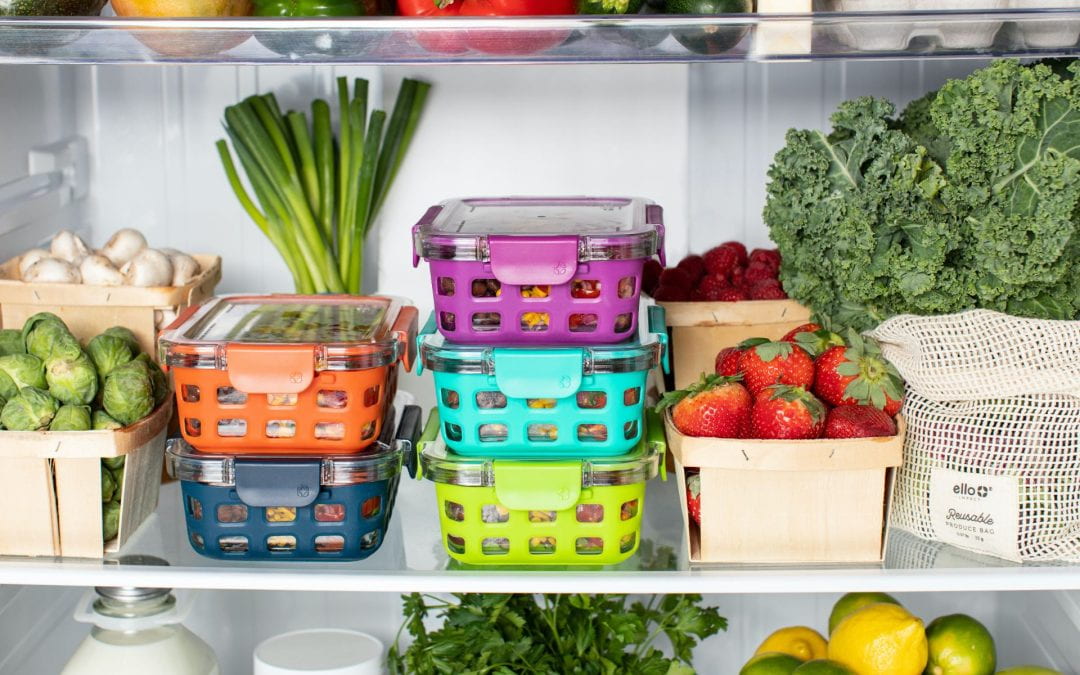By: Julia Mertes, Communications Intern, The Lion’s Pantry
While attending college and balancing the demands of work, school, and personal obligations, many people fail to practice meal planning tips. However, meal planning helps improve one’s diet by ensuring nutritional values are considered and eliminates excess food waste.
Here are 20 tips and tricks to successful meal planning to implement into your daily and weekly schedules:
- Consider the food groups that you will be eating.
When planning your meals for the week or month, be aware of the food groups being represented in your plan.
- Are you getting enough protein, fruits and vegetables?
- Are there any food groups missing?
- Are you eating excess salt or sugar?
- Can you substitute a food item for another to ensure appropriate food group portions?
Try to find recipes that incorporate various food groups.
- Organize your cooking space.
In order to know the ingredients that you’ll need to pick up during your next shopping trip, you’ll need an organized cooking space and cupboard system. If you have a container of peanut butter in the cupboard, you wouldn’t want to pick up another unit when you go to the store again. Know the items you have in your cupboard and plan accordingly.
- Store your cooking products appropriately.
Purchase quality storage containers to keep your food in and ensure freshness of items. When garnering storage products, check to ensure they will serve your purposes.
- Is the container large enough?
- Do you need smaller containers for single-portion leftovers?
- Is the container suitable for freezing, microwaving or dishwasher cleaning?

Photo by Ella Olsson on Unsplash
- Use labels to organize your food and its expiration date.
Once you make a recipe or garner leftovers, label the container with the date it was made. Keep track of when your food is appropriate to consume and when it should be thrown away with this hack.
- Find recipes for food ingredients that are close to expiration.
If you have a product that’s close to its expiration date, search online or in cookbooks for recipes that you could make. Use the products while you can and make the most of what you have.
- Maintain a stock of staple food items to integrate into meals.
When meal prepping, you may consider keeping basic food items in your pantry to make menu planning easier. For instance, you could keep baking essentials like baking powder, baking soda, flour, cornstarch, and oils in your pantry since they are used within a variety of recipes. If you enjoy making recipes with beans, pasta, soup broths, or canned meats, these may also be ingredients to keep on hand. You may also want to stock your cupboards with spices and herbs that could be easily integrated into meals.

Photo by Estée Janssens on Unsplash
- Designate a particular day or time to meal plan and organize your cooking area.
Find a day that you will consistently have time to organize your cooking space and plan upcoming meals. If you have free time over the weekend, choose a time that would work best for your schedule consistently. Consistency is key!
- Keep track of your favorite meals.
Once you find a new recipe, make sure to write it down or print it out to save for future meals. Get a binder or recipe box and keep track of the recipes you plan to make in the future. If the recipe is in a cookbook, mark it with post-it notes. If you found it on Pinterest or Facebook, share it so you can find it again in the future.
- Make a list of items you’ll need for recipes and upcoming meals.
Plan ahead. What recipes do you want to make this week? List the ingredients and check your pantry to see what items you need to pick up at the store. Figure out what other meals can be made with those ingredients. If you are making a recipe with rice, try to find other foods to make that will also use rice as a primary (or even secondary) ingredient.

Photo by Jason Jarrach on Unsplash
- Prep your fruits and vegetables appropriately as soon you return home.
After purchasing fresh produce from the store, take the time to wash, cut and store them appropriately so they will be easier to eat—even amid busy work schedules. If you need to roast vegetables, for upcoming meals take time to heat your oven and throw the vegetables in to cook.
- Repurpose your leftovers and use them to make a delicious meal.
If you have leftovers from your favorite dinner or lunch, you don’t need to reheat the same meal over and over. Take your leftovers and be creative. In fact, create new meals out of your leftovers, which will allow you to save food, stash up money, and create something delicious.
- Pre-portion your food.
If you have a substantial-sized box or package of food, consider dividing the items up into easily snackable portions. You could pour the product into a particular number of bags or measure out the serving size (or the amount you desire) using measuring cups.

Photo by Scott Warman on Unsplash
- Avoid shopping while you’re hungry.
If possible, avoid shopping while you’re hungry as you’ll likely pick up products that you don’t need or won’t use. In fact, science supports the idea that going to the store when hungry promotes excess shopping and binge purchases that would not be made otherwise, according to Healthline. So, we recommend munching on a granola bar or some other snack before planning your next grocery visit.
- Try new recipes and incorporate fun ingredients.
If you’re tired of eating the same thing every day, consider experimenting with new recipes and incorporating fun ingredients into your typical dishes.
- Consider how much cook time is required of different recipes and meals.
When planning and deciding which meals to make during the week, consider how long the prep time and cook time will be. If you are expecting a busy day full of classes and a work shift, plan meals with minimal cook time that can be made and eaten on the go.

Photo by Sandi Benedicta on Unsplash
- Make extra food, when possible.
If you can double a recipe, do so! Then, you will have easy meals for the rest of the week. Simply store the products appropriately and you can save your dish for a subsequent lunch or dinner.
- Stick to your plan.
It can be tempting to deviate from one’s plans, especially during a busy week. However, try to stay motivated and stick to your plan whenever possible. Use the foods that you planned to cook with throughout the week and make some delicious meals that will leave you full and energized.
- Try planning meals that revolve around a particular theme, like Mexican and Southwest items.
If meal planning seems boring to you, alternate your meal plans according to themes. Make a Mexican or Southwest menu for the week. Then, change it up and create a fruit-filled menu plan. Here are some other options to consider:
- Vegan Week — Eat your favorite vegan recipes like eggplant lasagna and vegan chili.
- Meat-Lovers Week — Eat recipes with your favorite meat products like lamb chops, sloppy joes, walking tacos, and beef stroganoff.
- Italian Week — It’s time to make the best Italian dishes like pasta, pizza, meatballs, and risotto.
- Polish Week — Whip up some Polish dinner like pierogi, potato pancakes, and haluski.
- Spanish Flavors Week — Make dishes with Spanish flavors like churros, paella, and gazpacho.
- Greek Cuisine Week — Use this week to make Greek-inspired dishes like stuffed eggplants, gyros, Greek lasagna, and Greek meatballs.
- German Specialties Week — Plan some German meals for the week like pretzels, bratwurst, and braised cabbage.
- Asian Cuisine Week — Create different Asian dishes throughout the week like spring rolls, wonton soup, samosas, Kung Pao chicken, and stir fry.
- Diner Dinners Week — Choose food items that you would typically find in a diner like hamburgers, turkey sandwiches, and buttermilk pancakes.
- Chopped (The TV Show) Family Meals Week — Recreate the traditional television show by using specified items to make new recipes for the week.
- Favorite Recipes Week — Create your favorite dishes from your saved recipes.
- Under the Sea Themed Week — Catch some seafood-themed meal this week like shrimp fried rice and fish tacos.
- Fireside Supper and Campfire Week — This is your chance to make some smoky and warm treats. For instance, whip up a foil pack, grilled cheese, or chicken skewer.
- Indian Cuisine Week — Make a meal plan with butter chicken, curry, chicken marsala, and naan.
- Breakfast for Dinner Week — Who said breakfast should only occur during certain times of the day? Eat a breakfast sandwich, omelet, or homemade muffin as delectable meals throughout the week.
- Soup and Salad Themed Week — Experiment with different soup and salad recipes.
- Appetizers Themed Week — This is a great opportunity to have some classic appetizers like pigs in a blanket, buffalo chicken dip, spinach artichoke dip, chicken wings, and deviled eggs.
- Movie Night Week — Eat the foods you’d typically eat during movie nights (or recipes that you found through movies). For instance, make variations of pizza, homemade garlic bread, calzones, and empanadas.
- American Dishes Week — The United States holds certain dishes as delicacies like apple pie, bagels, biscuits and gravy, grits, barbeque, tater tots and Philadelphia cheesesteaks. Add them all to your list this week.
- Sandwich Week — Make a variety of sandwiches and interpret it as you please. Do you consider tacos to be sandwiches? How about hotdogs or hamburgers? The possibilities are endless.
- Soul Food Week — Whip up some delicious fried chicken, warm cornbread, and gooey macaroni and cheese. There are many options to make!
- Slow Cooker Foods Week — Do you have a busy week? Plan a variety of slow cooker recipes for each day!
- French Feast Week — Find inspiration from French cuisine by making food like French onion soup and Boeuf Bourguignon.
- Bite Sized Meals Week — Create meals that you can eat in one bite. Think of pinwheel sandwiches, protein bites, chicken nuggets, wontons, and zucchini chips.
- Try using slow cooker meals so your dinner will be done when you come home.
If you have a busy schedule, using a slow cooker to make meals will save time and ensure a nutritious dish is completed when work or school is completed.
- Multitask when possible to get more things done at once.
Although multitasking may not always be plausible, you may find time to get multiple things done at once. For instance, you can try watching the new Hallmark holiday movie while meal prepping.

